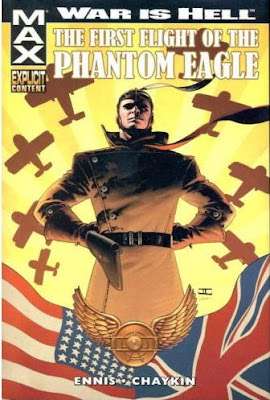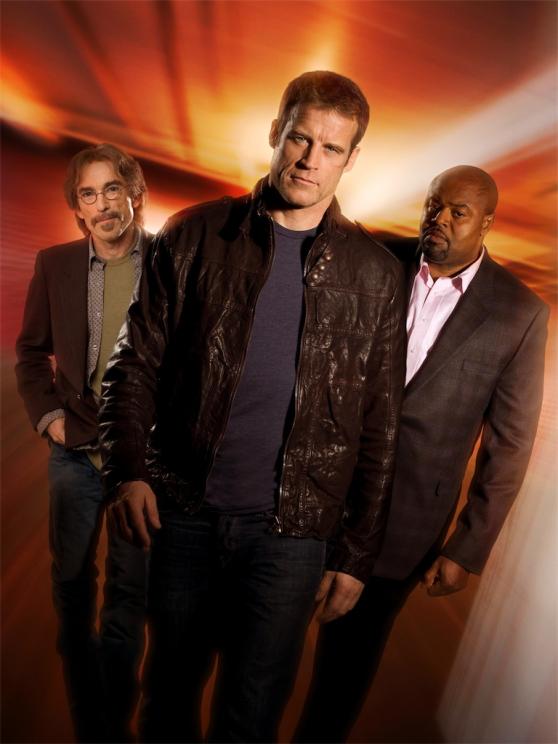X-Men Forever, v. 1: Picking Up Where We Left Off
Collects: X-Men Forever #1-5 (2009)
Released: October 2009 (Marvel)
Format: 120 pages / color / $16.99 / ISBN: 9780785136798
What is this?: Chris Claremont writes early ‘90s X-Men two decades later.
The culprits: Writer Chris Claremont and artist Tom Grummett
Marvel has a love / hate relationship with writer Chris Claremont’s relationship with the X-Men.
They have continually touted his work on Uncanny X-Men as a tour de force ever since he left / was forced out. They love to tease his return, that he’s going to take them all back to the glory days of the late ‘80s. They allowed him to return to Wolverine for a few issues in the late ’90s. Then they actually gave him control of Uncanny X-Men and X-Men for a year or so around 2000. Since then, he’s worked on Exiles and various out-of-continuity miniseries — letting him play with knockoff X-Men but making sure none of it matters.
And the latest iteration of that plan is X-Men Forever, v. 1: Picking up Where We Left Off, which is supposed to allow Claremont to write stories as if he never left the X-Men.
 Still, that rings hollow. The title is false advertising. Aside from the “never standing in the same river twice” school of thought — in this case, never being able to read the same Claremont you grew up with — this doesn’t really follow X-Men #3 / Uncanny X-Men #280, which is where Claremont left. Nightcrawler and Shadowcat are inexplicably back from Excalibur. Jean and Wolverine have some sort of love connection that certainly wasn’t there when Claremont left. SHIELD has wormed its way into the X-Men. As Paul O’Brien and others have pointed out, artist Tom Grummett isn’t the sort of ‘90s / Image artist X-Men would have had back then. And this doesn’t exactly jibe with the hints Claremont has given in interviews about the direction he would have gone in if he had been allowed to continue.
Still, that rings hollow. The title is false advertising. Aside from the “never standing in the same river twice” school of thought — in this case, never being able to read the same Claremont you grew up with — this doesn’t really follow X-Men #3 / Uncanny X-Men #280, which is where Claremont left. Nightcrawler and Shadowcat are inexplicably back from Excalibur. Jean and Wolverine have some sort of love connection that certainly wasn’t there when Claremont left. SHIELD has wormed its way into the X-Men. As Paul O’Brien and others have pointed out, artist Tom Grummett isn’t the sort of ‘90s / Image artist X-Men would have had back then. And this doesn’t exactly jibe with the hints Claremont has given in interviews about the direction he would have gone in if he had been allowed to continue.
But none of that affects how good this story is — or should affect that. Unfortunately, it does color it a little. Claremont is … well, he is as he is today, which is to say his dialogue sounds like him and not that much like different characters. Even Beast sounds like everyone else. On the other hand, the plotting in this first TPB is nothing like classic Claremont — rapid changes out of nowhere, with seemingly little buildup or warning. That’s a function, in many cases, of the abrupt nature of the mandate — here, pick up a story you started 20 years ago, but remember, we don’t have time for that quick buildup crap — but it still rankles.
It doesn’t surprise me that it took me this long to comment on the actual story. (That’s the way it is with Claremont these days; he comes with so much baggage that the story seems almost secondary.) It starts with a fight with Fabian Cortez, which is a direction that flows from X-Men #3, but that just serves to set up Claremont’s new / old team. Once the story gets going, it’s somewhat enjoyable, with a double agent in the X-Men, a new villainous organization, and a death on the team. I’m not convinced by any of the individual revelations — who dies, who the double agent is, Shadowcat’s new power, why I should care about Sabretooth being blinded when he has a healing factor, etc. Still, it seems like an interesting framework to hang a story on.
As I said, Grummett is nothing like the Jim Lee / Whilce Portacio artists who worked with Claremont at the end of his run. I’m not complaining; I like Grummett’s work, solid as it is. It feels like it has real weight, and it’s very good at telling the story while giving the characters their classic looks. I also have to give credit to colorist Wilfredo Quintana, whose work seems bright enough for the nostalgia without letting it overwhelm the scenes.
There’s a decent amount of promise in the first volume of X-Men Forever, and I think fans who were heartbroken by Claremont’s exit from the X-Men and his successors’ efforts will find a lot to like here. I see it too, but I can’t say that it’s enough to make me want to return to the title. There are too many things that pluck at my mind, drawing me out of the story. Maybe Claremont just needs time to settle down, maybe this is just a bump in the road … but I’m not sure I want to spend another $17 to figure it out.
Rating: ![]()
![]() (2 of 5)
(2 of 5)
Labels: 2, 2009 October, Chris Claremont, Marvel, Tom Grummett, Wilfredo Quintana, X-Men, X-Men Forever





 I remember being slightly disappointed by Battle when I first read it. Looking over it now, I can’t quite see why. Battle is a heck of a value: ten issues for $17.99. (I tend to say this with the DC books I review but rarely the Marvel books.) It really feels like you’re getting two books in one with this one — and I mean that literally: #76-80 makes up one book, and #81-5 is a completely different storyline. Although it gives the reader more for the dollar, it does take away from a dramatic departure at the end of the first storyline. (On the other hand, that character stays in the book, if not always with the team, so the departure isn’t that big of a cliffhanger.)
I remember being slightly disappointed by Battle when I first read it. Looking over it now, I can’t quite see why. Battle is a heck of a value: ten issues for $17.99. (I tend to say this with the DC books I review but rarely the Marvel books.) It really feels like you’re getting two books in one with this one — and I mean that literally: #76-80 makes up one book, and #81-5 is a completely different storyline. Although it gives the reader more for the dollar, it does take away from a dramatic departure at the end of the first storyline. (On the other hand, that character stays in the book, if not always with the team, so the departure isn’t that big of a cliffhanger.)  His job is taken over by Joe Bennett, who draws five of the remaining eight issues in Battle. He draws action scenes pretty well, which is good, because he gets to draw a lot of them in Battle. I never warmed to his style, however; his women lack well-defined noses, have slack, open mouths, and generally don’t have much expression on their faces. They look a little like blow-up dolls, to be frank. I really like the art from Joe Prado, who draws a slightly scratchy #76, featuring the Birds vs. a Goth teenage Wicca with real power, and Tom Derenick, who draws #77-8 in a style more than slightly reminiscent of Sal Buscema, whom I never get tired of.
His job is taken over by Joe Bennett, who draws five of the remaining eight issues in Battle. He draws action scenes pretty well, which is good, because he gets to draw a lot of them in Battle. I never warmed to his style, however; his women lack well-defined noses, have slack, open mouths, and generally don’t have much expression on their faces. They look a little like blow-up dolls, to be frank. I really like the art from Joe Prado, who draws a slightly scratchy #76, featuring the Birds vs. a Goth teenage Wicca with real power, and Tom Derenick, who draws #77-8 in a style more than slightly reminiscent of Sal Buscema, whom I never get tired of.  (2.5 of 5)
(2.5 of 5) Strengths: This is a Garth Ennis war story. You probably already have an inkling on whether you like that or not. It involves blowing someone’s “fun” expectations of war all to hell, experienced soldiers making wry comments about men dying, and a generous helping of mutilated human flesh. The deaths in the issue are unexpected but not quite out of character. The period and the setting feel authentic, although my idea of “authentic” is influenced by mass media influences. Howard Chaykin’s art does capture the brutality of air combat.
Strengths: This is a Garth Ennis war story. You probably already have an inkling on whether you like that or not. It involves blowing someone’s “fun” expectations of war all to hell, experienced soldiers making wry comments about men dying, and a generous helping of mutilated human flesh. The deaths in the issue are unexpected but not quite out of character. The period and the setting feel authentic, although my idea of “authentic” is influenced by mass media influences. Howard Chaykin’s art does capture the brutality of air combat. So, that out of the way, how does Human Target do with the premise it runs with? Fine, I suppose, although each episode has been a slow descent into forgettability. (There’s a reason I’m reviewing the first four episodes even though the fifth episode aired Wednesday.) The action is good enough, the character well enough defined (although not always compelling), and it has a bit of a sense of humor. But it never distinguishes itself by being very good at anything.
So, that out of the way, how does Human Target do with the premise it runs with? Fine, I suppose, although each episode has been a slow descent into forgettability. (There’s a reason I’m reviewing the first four episodes even though the fifth episode aired Wednesday.) The action is good enough, the character well enough defined (although not always compelling), and it has a bit of a sense of humor. But it never distinguishes itself by being very good at anything.  Snowpocalypse. I warned you —
Snowpocalypse. I warned you — 